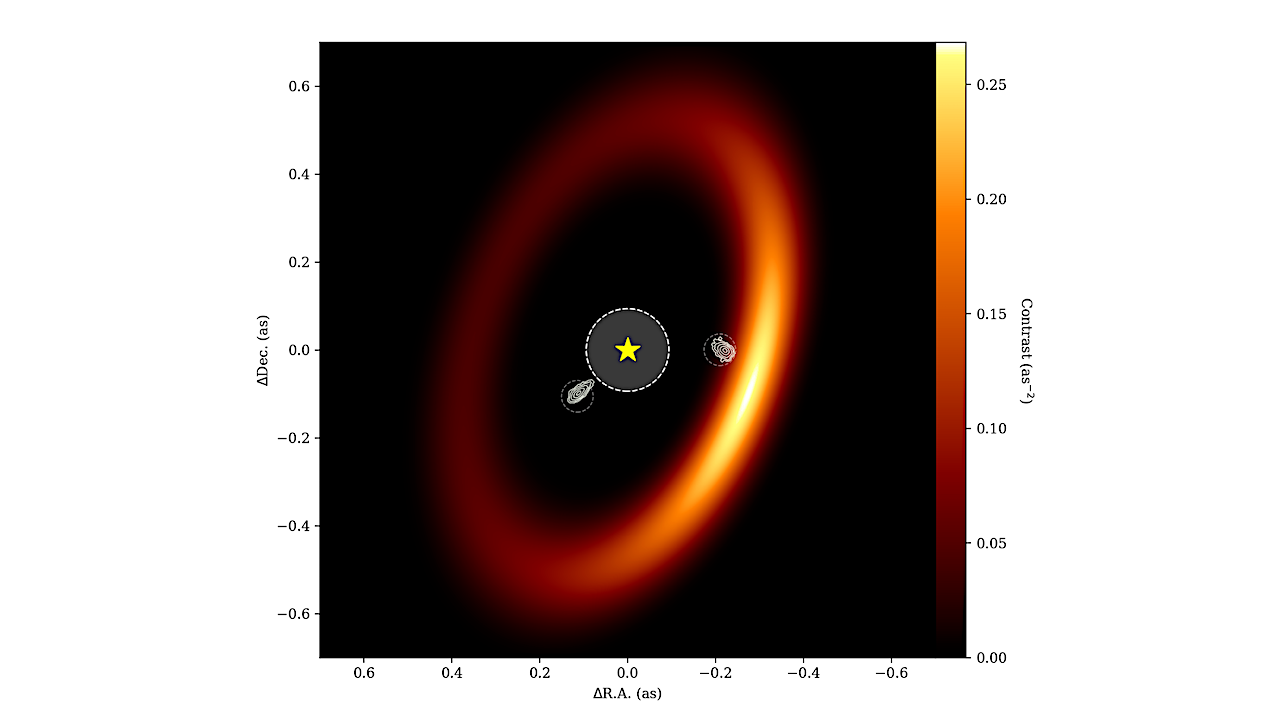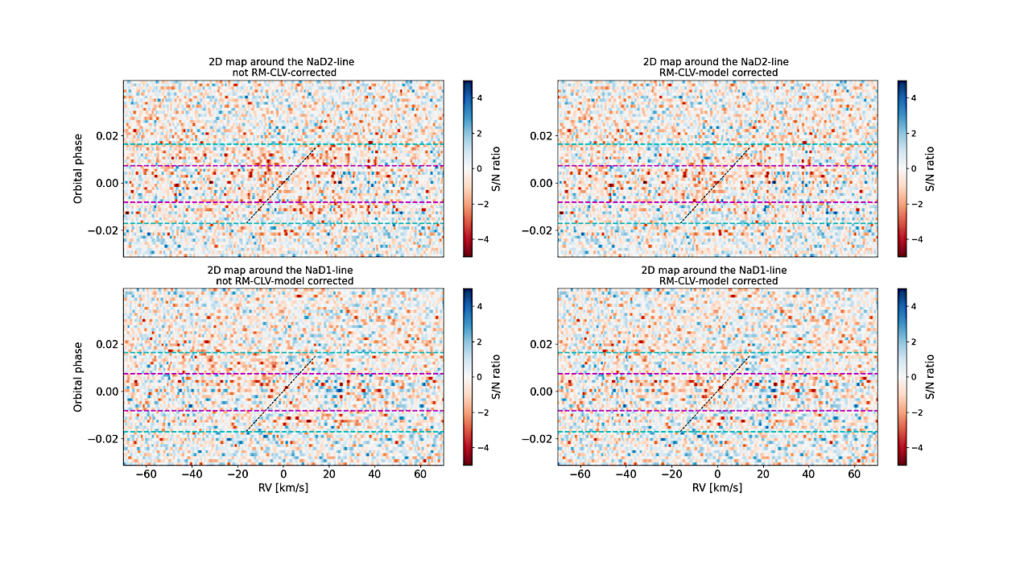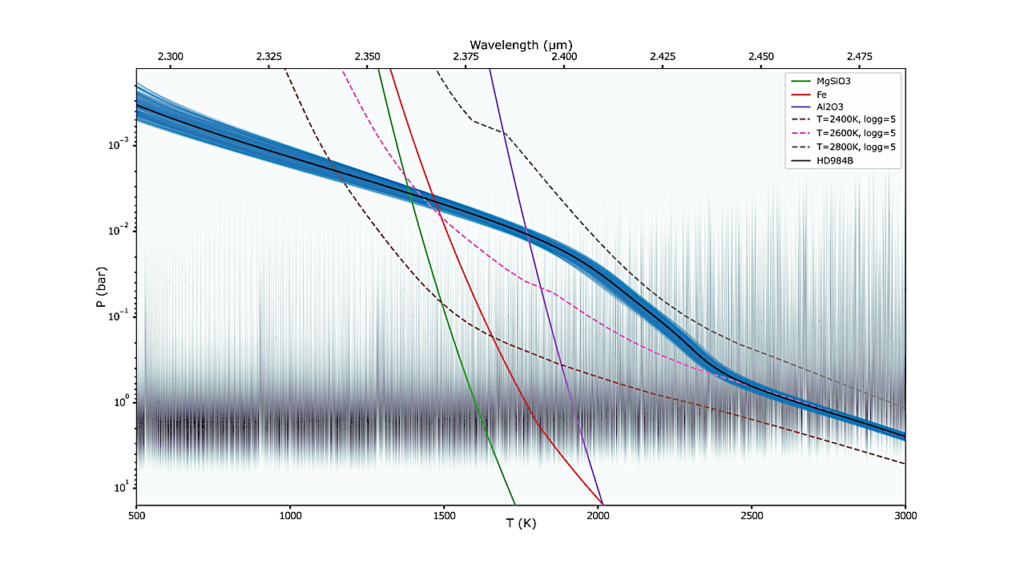The James Webb Interferometer: Space-based Interferometric Detections of PDS 70 b and c at 4.8 μm

We observed the planet-hosting system PDS 70 with the James Webb Interferometer, JWST’s Aperture Masking Interferometric (AMI) mode within NIRISS.
Observing with the F480M filter centered at 4.8 μm, we simultaneously fit a geometric model to the outer disk and the two known planetary companions. We re-detect the protoplanets PDS 70 b and c at an SNR of 21 and 11, respectively. Our photometry of both PDS 70 b and c provide evidence for circumplanetary disk emission through fitting SED models to these new measurements and those found in the literature.
We also newly detect emission within the disk gap at an SNR of ∼4, at a position angle of 207+11−10 degrees, and an unconstrained separation within ∼200 mas. Follow-up observations will be needed to determine the nature of this emission.
We place a 5σ upper limit of Δmag = 7.56 on the contrast of the candidate PDS 70 d at 4.8 μm, which indicates that if the previously observed emission at shorter wavelengths is due to a planet, this putative planet has a different atmospheric composition than PDS 70 b or c. Finally, we place upper limits on emission from any additional planets in the disk gap.
We find an azimuthally averaged 5σ upper limit of Δmag ≈ 7.5 at separations greater than 125 mas. These are the deepest limits to date within ∼250 mas at 4.8 μm and the first space-based interferometric observations of this system.
Dori Blakely, Doug Johnstone, Gabriele Cugno, Anand Sivaramakrishnan, Peter Tuthill, Ruobing Dong, Benjamin J. S. Pope, Loïc Albert, Max Charles, Rachel A. Cooper, Matthew De Furio, Louis Desdoigts, René Doyon, Logan Francis, Alexandra Z. Greenbaum, David Lafrenière, James P. Lloyd, Michael R. Meyer, Laurent Pueyo, Shrishmoy Ray, Joel Sánchez-Bermúdez, Anthony Soulain, Deepashri Thatte, Thomas Vandal
Comments: Submitted to ApJ
Subjects: Earth and Planetary Astrophysics (astro-ph.EP)
Cite as: arXiv:2404.13032 [astro-ph.EP] (or arXiv:2404.13032v1 [astro-ph.EP] for this version)
Submission history
From: Dori Blakely
[v1] Fri, 19 Apr 2024 17:45:34 UTC (6,566 KB)
https://arxiv.org/abs/2404.13032
Astrobiology,








